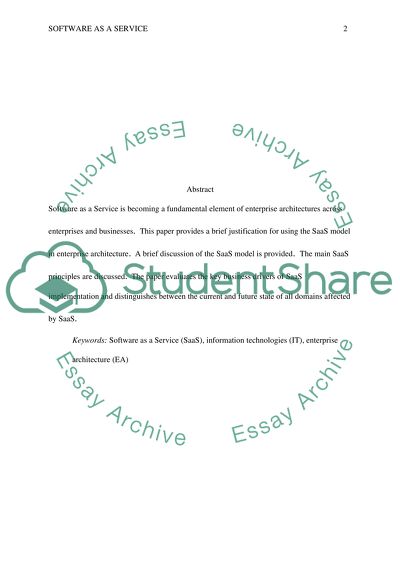Cite this document
(“Software as a Service (SAAS) as It Pertains to Enterprise Architecture Essay”, n.d.)
Retrieved de https://studentshare.org/information-technology/1390624-software-as-a-service-saas-as-it-pertains-to
Retrieved de https://studentshare.org/information-technology/1390624-software-as-a-service-saas-as-it-pertains-to
(Software As a Service (SAAS) As It Pertains to Enterprise Architecture Essay)
https://studentshare.org/information-technology/1390624-software-as-a-service-saas-as-it-pertains-to.
https://studentshare.org/information-technology/1390624-software-as-a-service-saas-as-it-pertains-to.
“Software As a Service (SAAS) As It Pertains to Enterprise Architecture Essay”, n.d. https://studentshare.org/information-technology/1390624-software-as-a-service-saas-as-it-pertains-to.


